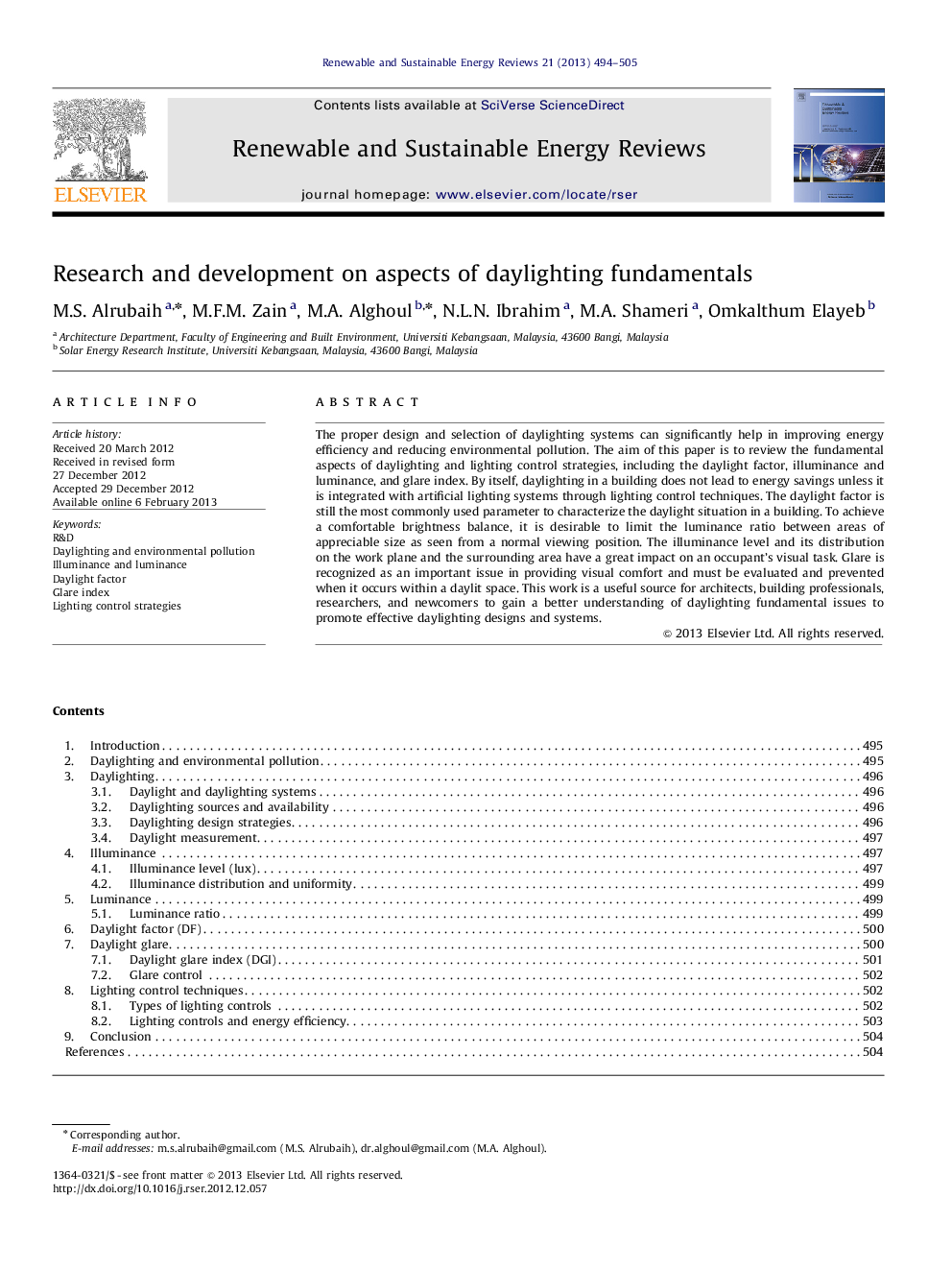| Article ID | Journal | Published Year | Pages | File Type |
|---|---|---|---|---|
| 1750168 | Renewable and Sustainable Energy Reviews | 2013 | 12 Pages |
The proper design and selection of daylighting systems can significantly help in improving energy efficiency and reducing environmental pollution. The aim of this paper is to review the fundamental aspects of daylighting and lighting control strategies, including the daylight factor, illuminance and luminance, and glare index. By itself, daylighting in a building does not lead to energy savings unless it is integrated with artificial lighting systems through lighting control techniques. The daylight factor is still the most commonly used parameter to characterize the daylight situation in a building. To achieve a comfortable brightness balance, it is desirable to limit the luminance ratio between areas of appreciable size as seen from a normal viewing position. The illuminance level and its distribution on the work plane and the surrounding area have a great impact on an occupant’s visual task. Glare is recognized as an important issue in providing visual comfort and must be evaluated and prevented when it occurs within a daylit space. This work is a useful source for architects, building professionals, researchers, and newcomers to gain a better understanding of daylighting fundamental issues to promote effective daylighting designs and systems.
